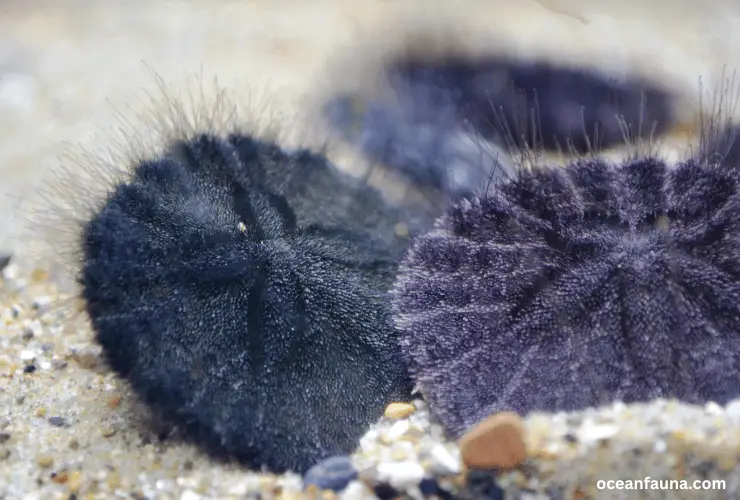No, sand dollars don’t have eyes. Instead, they have light-sensitive and sensory receptors that help them move. They don’t even have any eyespots or compound eyes. Apart from the eyes, they also lack a brain, heart, and blood.
Sand dollars belong to Phylum Echinodermata, which don’t contain simple eyes. However, some members of this phylum contain compound eyes or large eyespots that help them see.
So, let’s dig through the article and unravel some interesting truths.
Do Sand Dollars Have Eyes? How Do They Move and Respond?
Sand dollars lack eyes and any other visionary organ. Instead, it has various receptors scattered throughout the body that help react and move in response to environmental changes.

Sand dollars move and respond with the help of various receptors in their body.
For example, sand dollars have chemoreceptors that help them sense the pheromones and mucus of the predator.
So, they get an alert that a predator is arising soon. As a result, they move away from the predator or bury themselves deep in the seabed.
Similarly, the juvenile and adult sand dollars have sensory receptors on the rims of their arms. So, every time they hit something, or anyone touches them, they move in response to it.
Moreover, the tube feet have tactile receptors that help them capture food.
How Do Sand Dollars See If They Have No Eyes?
Although eyes and eyespots are absent in sand dollars and sea urchins, they have opsins on the end of tube feet. Surprised? So was I.
But that is true. Researchers sequenced the genome of purple sea urchins, and they found that sea urchins contain several light-sensitive genes that humans have.
Later, the tube feet were analyzed, and it was found that the tube feet of all sea urchins (regular and irregular) are pockmarked with opsins- the light-sensitive proteins present in humans too.

So, it is believed that when the light of some specific wavelength falls on these opsins, they might produce a particular response.
However, very less research is done on sand dollar eyes, and much more is yet to unravel.
Do All Echinoderms Lack Eyes?
No!
Not all echinoderms lack eyes. Some have compound eyes, others have simple ocelli, and yet others have visible eye spots on the end of their arms.
For example,
- Sea stars have small eye spots on each arm
- Starfish have nearly 40 eyes
- Brittle stars have light-sensitive cells scattered throughout the body
However, other members of phylum Echinodermata, like sea cucumber, sea urchins, crinoids, and sand dollars, lack eyes.
What Organs Do Sand Dollars Lack?
Sand dollars belong to one of the simplest groups of invertebrates, Echinodermata.
So, they have only the basic organs and organ systems like the vascular system, spine, tube feet, mouth, anus, arms, teeth, jaw, and few muscles.
However, they lack other organs, which includes
- Well-developed central nervous system or brain
- Spinal Cord
- Bony Skeleton
- Heart
- Lungs
- Blood
- Eyes
- Ears
Frequently Asked Questions
Q.2 What organs do sand dollars have?
Sand dollars have only a few organs and organ systems like jaws, teeth, mouth, anus, spines, tube feet, and vascular system.
Q.3 Which animals don’t have eyes?
Various animals don’t have eyes. These include star-nosed mole, atretochoana, sea urchins, hydra, Mexican tetra, Widemouth blind cat, sea cucumber, sand dollars, etc.
Final Verdict
Sand dollars have no eyes. Instead, they have various receptors on the body that help them guide and respond to the external environment.
However, various other members of echinoderms have eyes. For example, sea stars and brittle stars have various eyespots.


2 thoughts on “Do Sand Dollars Have Eyes? [Scientific Facts]”